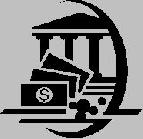
 |
|
| Financial Terms | |
| Wash |
|
Information about financial, finance, business, accounting, payroll, inventory, investment, money, inventory control, stock trading, financial advisor, tax advisor, credit.
Main Page: business, tax advisor, money, inventory, inventory control, payroll, financial advisor, financial, |
Definition of Wash
WashGains equal losses.
Related Terms:Federal Reserve SystemThe central bank of the U.S., established in 1913, and governed by the Federal Normalizing methodThe practice of making a charge in the income account equivalent to the tax savings Smithsonian agreementA revision to the Bretton Woods international monetary system which was signed at Accelerated cost recovery system (ACRS)Schedule of depreciation rates allowed for tax purposes. Capitalization methodA method of constructing a replicating portfolio in which the manager purchases a Clearing House Automated Payments System (CHAPS)A computerized clearing system for sterling funds Clearing House Interbank Payments System (CHIPS)An international wire transfer system for high-value  Current rate methodUnder this currency translation method, all foreign currency balance-sheet and income Direct estimate methodA method of cash budgeting based on detailed estimates of cash receipts and cash Dupont system of financial controlHighlights the fact that return on assets (ROA) can be expressed in terms European Monetary System (EMS)An exchange arrangement formed in 1979 that involves the currencies Excess reservesAny excess of actual reserves above required reserves. Federal agency securitiesSecurities issued by corporations and agencies created by the U.S. government, Federal credit agenciesAgencies of the federal government set up to supply credit to various classes of Federal Deposit Insurance Corporation (FDIC)A federal institution that insures bank deposits. Federal Financing BankA federal institution that lends to a wide array of federal credit agencies funds it  Federal fundsNon-interest bearing deposits held in reserve for depository institutions at their district federal Federal funds marketThe market where banks can borrow or lend reserves, allowing banks temporarily Federal funds rateThis is the interest rate that banks with excess reserves at a federal reserve district bank Federal Home Loan BanksThe institutions that regulate and lend to savings and loan associations. The Federally related institutionsArms of the federal government that are exempt from SEC registration and Flow-through methodThe practice of reporting to shareholders using straight-line depreciation and Freddie Mac (Federal Home Loan Mortgage Corporation)A Congressionally chartered corporation that Free reservesExcess reserves minus member bank borrowings at the Fed. Imputation tax systemArrangement by which investors who receive a dividend also receive a tax credit for Just-in-time inventory systemssystems that schedule materials/inventory to arrive exactly as they are Log-linear least-squares methodA statistical technique for fitting a curve to a set of data points. One of the  Monetary / non-monetary methodUnder this translation method, monetary items (e.g. cash, accounts Multirule systemA technical trading strategy that combines mechanical rules, such as the CRISMA Nonsystematic riskNonmarket or firm-specific risk factors that can be eliminated by diversification. Also Official reservesHoldings of gold and foreign currencies by official monetary institutions. Progressive tax systemA tax system wherein the average tax rate increases for some increases in income but Purchase methodAccounting for an acquisition using market value for the consolidation of the two entities' Required reservesThe dollar amounts based on reserve ratios that banks are required to keep on deposit at a federal reserve Bank. ReserveAn accounting entry that properly reflects the contingent liabilities. Reserve currencyA foreign currency held by a central bank or monetary authority for the purposes of Reserve ratiosSpecified percentages of deposits, established by the federal reserve Board, that banks must Reserve requirementsThe percentage of different types of deposits that member banks are required to hold Residual methodA method of allocating the purchase price for the acquisition of another firm among the Simple compound growth methodA method of calculating the growth rate by relating the terminal value to Split-rate tax systemA tax system that taxes retained earnings at a higher rate than earnings that are Statement-of-cash-flows methodA method of cash budgeting that is organized along the lines of the statement of cash flows. SystematicCommon to all businesses. Systematic riskAlso called undiversifiable risk or market risk, the minimum level of risk that can be Systematic risk principleOnly the systematic portion of risk matters in large, well-diversified portfolios. Temporal methodUnder this currency translation method, the choice of exchange rate depends on the Two-tier tax systemA method of taxation in which the income going to shareholders is taxed twice. Unsystematic riskAlso called the diversifiable risk or residual risk. The risk that is unique to a company MACRS (Modified Accelerated Cost Recovery System)A depreciation method created by the IRS under the Tax Reform Act of 1986. Companies must use it to depreciate all plant and equipment assets installed after December 31, 1986 (for tax purposes). Accounting systemA set of accounts that summarize the transactions of a business that have been recorded on source documents. Planning, programming and budgeting system (PPBS)A method of budgeting in which budgets are allocated to projects or programmes rather than to responsibility centres. Allowance methodA method of adjusting accounts receivable to the amount that is expected to be collected based on company experience. Direct methodA method of preparing the operating section of the Statement of Cash Flows that uses the company’s actual cash inflows and cash outflows. Direct write-off methodA method of adjusting accounts receivable to the amount that is expected to be collected by eliminating the account balances of specific nonpaying customers. Indirect methodA method of preparing the operating section of the Statement of Cash Flows that does not use the company’s actual cash inflows and cash outflows, but instead arrives at the net cash flow by taking net income and adjusting it for noncash expenses and the changes from last year in the current assets and current liabilities. Periodic inventory systemAn inventory system in which the balance in the Inventory account is adjusted for the units sold only at the end of the period. Perpetual inventory systemAn inventory system in which the balance in the Inventory account is adjusted for the units sold each time a sale is made. Systematic RiskThe amount of total risk that cannot be eliminated by portfolio Unsystematic RiskThe amount of total risk that can be eliminated by diversification by actual cost systema valuation method that uses actual direct algebraic methoda process of service department cost allocation business intelligence (BI) systema formal process for gathering and analyzing information and producing intelligence to meet decision making needs; requires information about charge-back systema system using transfer prices; see transfer cost control systema logical structure of formal and/or informal cost management system (CMS)a set of formal methods direct methoda service department cost allocation approach dividend growth methoda method of computing the cost enterprise resource planning (ERP) systema packaged software program that allows a company to FIFO method (of process costing)the method of cost assignment that computes an average cost per equivalent flexible manufacturing system (FMS)a production system in which a single factory manufactures numerous variations high-low methoda technique used to determine the fixed hybrid costing systema costing system combining characteristics job order costing systema system of product costing used judgmental method (of risk adjustment)an informal method of adjusting for risk that allows the decision maker just-in-time manufacturing systema production system that attempts to acquire components and produce inventory only as needed, to minimize product defects, and to management control system (MCS)an information system that helps managers gather information about actual organizational occurrences, make comparisons against plans, management information system (MIS)a structure of interrelated elements that collects, organizes, and communicates method of least squaressee least squares regression analysis method of neglecta method of treating spoiled units in the modified FIFO method (of process costing)the method of cost assignment that uses FIFO to compute a cost per net present value methoda process that uses the discounted normal cost systema valuation method that uses actual performance management systema system reflecting the entire package of decisions regarding performance measurement and evaluation process costing systema method of accumulating and assigning costs to units of production in companies producing large quantities of homogeneous products; pull systema production system dictated by product sales push systemthe traditional production system in which red-line systeman inventory ordering system in which a red responsibility accounting systeman accounting information system for successively higher-level managers about the performance of segments or subunits under the control risk-adjusted discount rate methoda formal method of adjusting for risk in which the decision maker increases the rate used for discounting the future cash flows to compensate for increased risk simplex methodan iterative (sequential) algorithm used to solve multivariable, multiconstraint linear programming problems six-sigma methoda high-performance, data-driven approach to analyzing and solving the root causes of business problems standard cost systema valuation method that uses predetermined step methoda process of service department cost allocation strict FIFO method (of process costing)the method of cost assignment that uses FIFO to compute a cost per equivalent unit and, in transferring units from a department, keeps the two-bin systeman inventory ordering system in which two weighted average method (of process costing)the method of cost assignment that computes an average cost per Bootstrapping, bootstrap methodAn arithmetic method for backing an First in, first-out costing method (FIFO)A process costing methodology that assigns the earliest Moving average inventory methodAn inventory costing methodology that calls for the re-calculation of the average cost of all parts in stock after every purchase. Payback methodA capital budgeting analysis method that calculates the amount of Purchase methodAn accounting method used to combine the financial statements of Related to : financial, finance, business, accounting, payroll, inventory, investment, money, inventory control, stock trading, financial advisor, tax advisor, credit. |